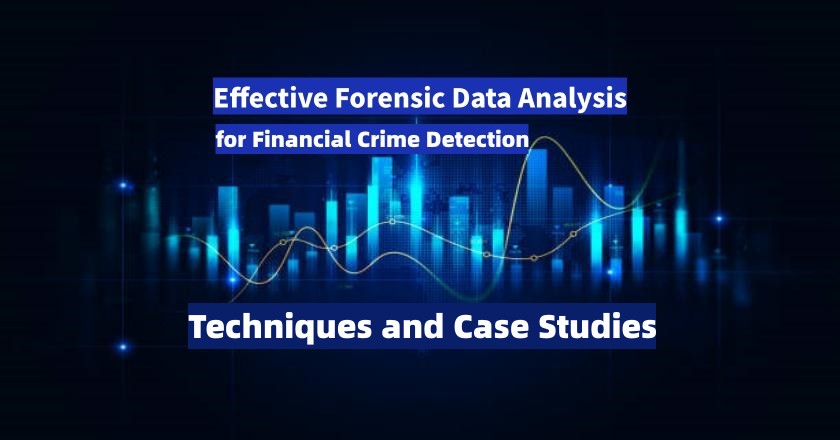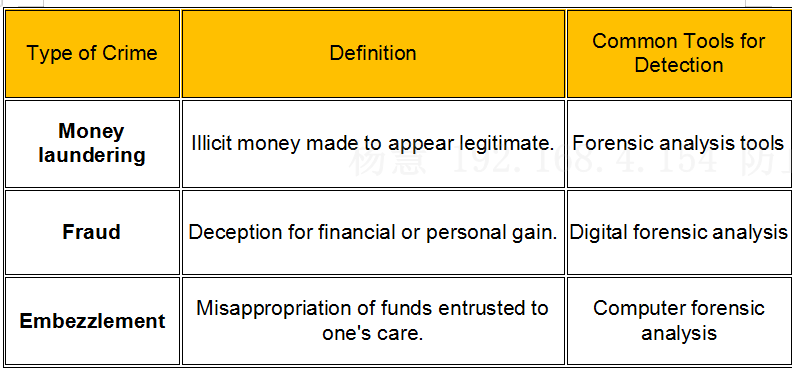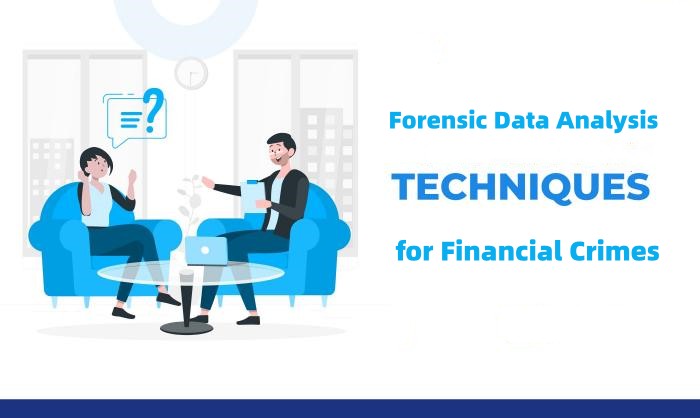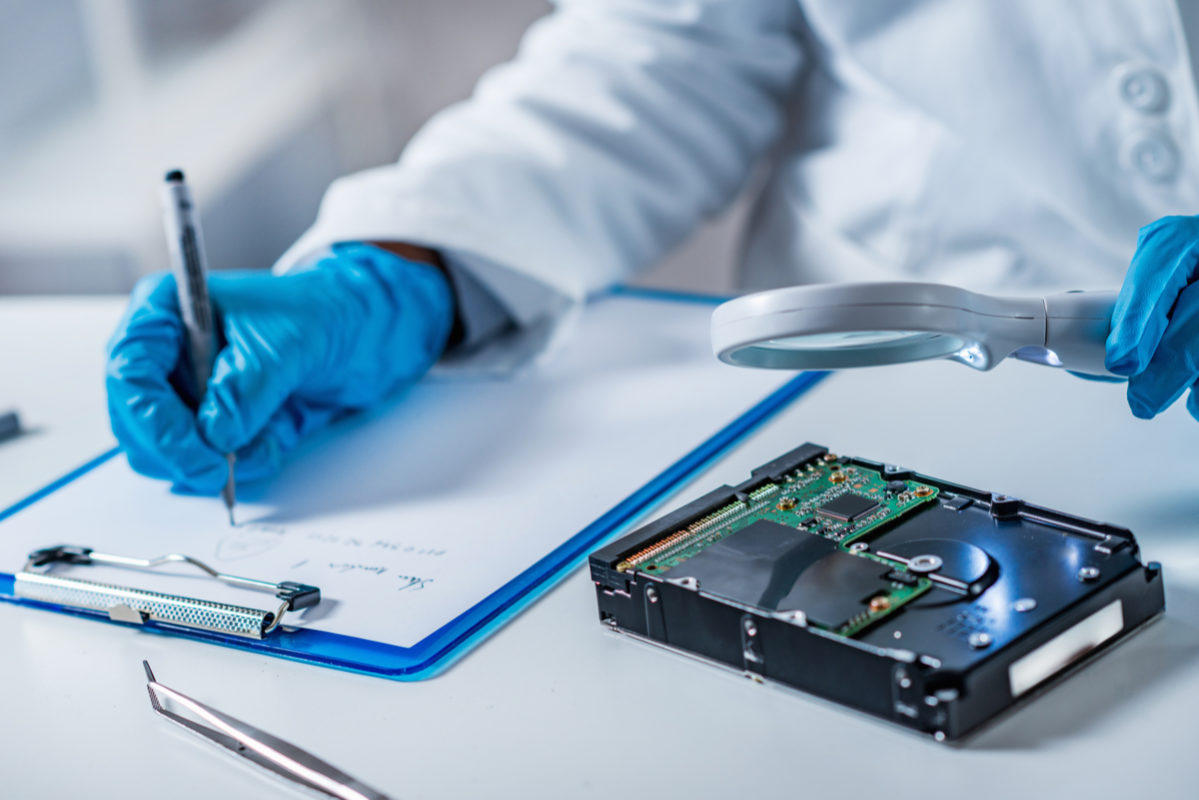Forensic data analysis is the careful looking at and interpretation of financial records to find patterns of theft, odd trades, and other bad behaviour with money. This field of study blends research methods, data science, and accounting to give a full picture of financial data. When looking into financial crimes, forensic analysis is very important. So that they can find minor signs of criminal behaviour like money laundering, embezzlement, or fraud, forensic analysts carefully look through huge amounts of financial data. This highly important tool not only helps find criminals, but it also prevents future financial crimes by marking high-risk areas and making it easier to keep an eye on financial transactions.
Effective Forensic Data Analysis for Financial Crime Detection

-
Content
- What Is Financial Crimes
- Techniques in Forensic Data Analysis for Financial Crimes
- Case Studies
- Best Practices for Implementing Forensic Data Analysis in Financial Crime Investigations
- Conclusion
-
Content
- What Is Financial Crimes
- Techniques in Forensic Data Analysis for Financial Crimes
- Case Studies
- Best Practices for Implementing Forensic Data Analysis in Financial Crime Investigations
- Conclusion
What Is Financial Crimes
1. Overview of Financial Crimes
2. Impact on Business and Economy
Financial crimes have a huge effect on the economy. They make people less likely to believe banking systems, make it more expensive to do business, and make economies less stable. This has a big effect on growth and security because it makes foreign capital less likely and changes the way the economy is planned.
3. Forensic Data Analysis: A Shield Against Financial Crimes
Forensic data analysis is a very important method for fighting these crimes. As both a cover and a barrier, it makes it possible to find secret trends and strange behaviour. By using advanced forensic tools, businesses can deal with possible threats before they happen. This protects their own finances and helps keep the economy safe for everyone.
Techniques in Forensic Data Analysis for Financial Crimes
1. Data Collection and Management
Forensic data analysis works best when all the data collected is correct and complete. It makes sure that all financial events are kept in a structured way, giving researchers a full set of data to work with. Maintaining data security, protecting data privacy, and setting clear protocols for data access and retrieval are all best practices in data management that are essential for investigating financial crimes. The dependability of the financial data that is analyzed is improved by using strong data management systems and conducting regular checks.
2. Data Analytics and Fusion
Data fusion and analytics are key to speeding up probes into financial crimes. Forensic researchers can get a clearer picture of financial actions by combining different types of data. Pattern recognition and anomaly identification are two techniques that analysts use to find deals that don’t make sense and could be signs of criminal activity. Taking a more complete look at things makes it easier to find and stop possible financial crimes.
3. Financial Crime Scripting
The idea behind financial crime writing is to find trends in how criminals act in financial systems. It includes making guesses about possible crimes and writing plots based on how fraudsters usually act. This method works really well for modelling and predicting illegal behaviour, which lets us take steps to stop it. For instance, writing possible ways to hide money or commit fraud can be used to check how strong current financial tracking systems are.
4. Big Data Analytics
As the amount and variety of data has grown, so has the role of big data analytics in finding financial crimes. Data mining software and prediction analytics are two common technologies and tools that are used to quickly handle big datasets. Big data analytics is a powerful tool in the fight against financial crimes because it helps find secret trends and connections that might not be seen with traditional analytical methods.
5. Advanced Analytics Approaches
New analytics methods, like machine learning and artificial intelligence (AI), are changing how financial crimes are found and rules are followed. It is possible for these technologies to learn from data trends and get better over time, which makes them better at finding scams. Advanced analytics has many benefits, including faster and more accurate identification, which is very important for preventing financial crime before it happens. For example, machine learning models can use past data to predict future illegal trades. This is a smart way to keep your money safe.
Case Studies
Case Study 1: Successful Detection of Money Laundering Using Forensic Data Analysis
Around a well-known bank, there were rumors that money laundering was going on. A team of investigative data analysts was hired to look over years of complicated financial transactions. The team found strange large-sum transactions that hadn’t been seen before by using methods like transaction pattern analysis and network behavior analytics. The results were important. A number of high-risk accounts were shut down, which led to court cases and changes to policies. The lesson learned was the indispensable value of continuous monitoring and advanced forensic analysis tools in detecting sophisticated financial crimes.
Case Study 2: Uncovering Fraud in a Major Corporation
There were claims of corporate theft at a large company that involved a number of high-level officials. Forensic data analysis was a very important part of the probe. Digital forensic analysis was used to look through reams of company data and find mistakes in financial reports and fake spending claims. Some of the most important results were that the company lost a lot of money over a number of years, which hurt shareholder trust and the company’s finances. This case made it very clear how important it is to have strict internal rules and regular investigative audits.
Case Study 3: Embezzlement Detection through Advanced Analytics
Someone in a government office gave a private tip about possible theft. A big part of the probe was forensic data analysis, especially computer forensic analysis types of analysis. To find strange buying trends and unauthorized money transfers, methods like statistical anomaly detection and predictive modelling were used. The data could be used to take action, which led to the return of stolen funds and the arrest of several people. This case made it clear how useful it is to use advanced analytics in regular checks to find and stop financial fraud.
Best Practices for Implementing Forensic Data Analysis in Financial Crime Investigations
To make forensic data analysis work well, you need more than just high-tech digital forensic software. You also need a plan for managing data, combining analytics, teaching staff, and working together.
1. Establishing a Robust Data Governance Framework
A strong data control system is the basis for good forensic data analysis. This system makes sure that data is correct, safe, and easy to access, all of which are necessary for accurate research. Setting clear rules for how to use data, store it, and keep it private helps businesses stay in line with regulations and builds trust among all parties. Also, the framework stays in line with changing business needs and technology advances thanks to regular checks and changes to the data control policies.
2. Integrating Advanced Analytics Tools and Techniques
Adding advanced analytics tools and methods is important for making financial crime probes more effective. Machine learning algorithms and digital forensics are two tools that can make data processing much faster and more accurate. Not only do these technologies automatically find trends and oddities, but they also change over time to deal with new threats. The analysis processes stay at the top of finding financial crimes thanks to regular changes and the addition of cutting-edge technologies.
3. Continuous Training and Development for Forensic Analysts
To successfully fight financial crimes, forensic experts need to have the most up-to-date information and skills. It is important to have chances for ongoing training and career growth. There are monthly classes on the newest tools and methods for forensics analysis, and people can also get certified in data protection and hacking. Spending money on analysts’ growth not only helps them do their jobs better, but it also helps the school stay ahead in the fast-paced field of forensic investigations.
4. Collaboration with Other Financial Institutions and Regulatory Bodies
No organization or country can fight financial crimes alone, as these crimes often cross organizational and national lines. By working together with other banks and government agencies, you can share best practices, data, and information. This way of working together makes it possible for a bigger tracking and detection system to catch illegal actions that might not be seen in the data of a single organization.
Implementing these best practices creates a fortified environment where forensic data analysis can thrive, significantly enhancing the detection and prevention of financial crimes.
Conclusion
Forensic data analysis is a very important tool for fighting financial crimes. Using different methods and case studies, this analytical approach is key to finding and understanding how complicated financial wrongdoing is. Establishing a strong data control system, incorporating advanced analytics, and encouraging ongoing learning and teamwork can help organization better find and stop financial crimes. Also, using forensic data analysis strategically not only helps find threats right away, but it also protects the financial system from future weaknesses. Employing these best practices will help companies stay strong in the face of changing financial threats, protecting honesty and faith in the financial system.





